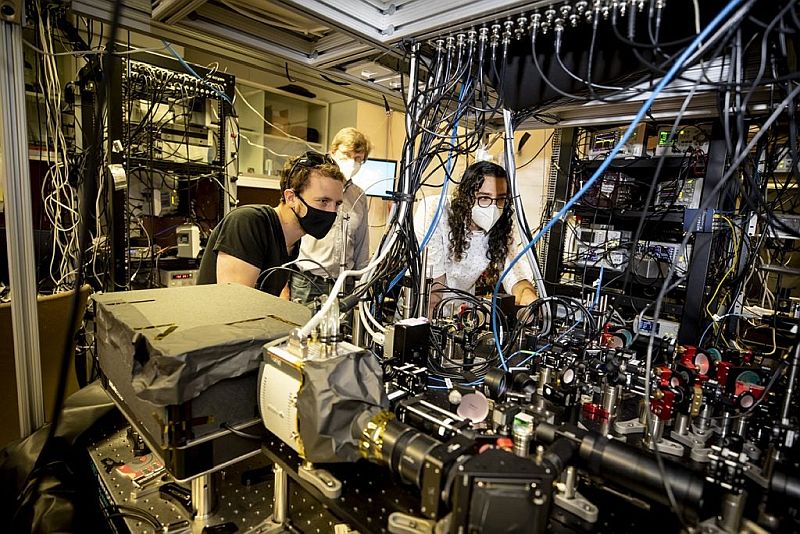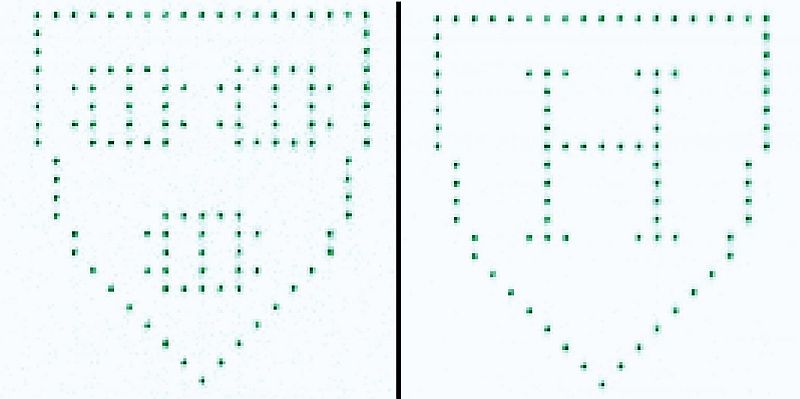
An international team of researchers from the Harvard-MIT Center for Ultracold Atoms and other universities has created a programmable quantum simulator. The newly developed quantum computer operates on 256 quantum bits unlike its predecessor, which was on 51 qubits.
A qubit – also called as quantum bit – is the basic unit of quantum information and the source of their massive processing power.
The system heralds a new era towards hosting complex quantum processes. If proved successful, it would move beyond the capabilities of even the fastest supercomputers today. With this, researchers envision to achieve breakthroughs in material science, quantum networks and communication technologies, finance, quantum sensing and metrology. And also bring about intractable problems solvable.
Increase in qubits
As per Sepehr Ebadi, the study’s lead author, system’s unprecedented size and programmability are the two major players that makes quantum computer ahead in the race of quantum computational arena. As it tackles the puzzling properties of matter at nano scales to greatly advance processing power.
Under appropriate conditions, the increase in qubits translates that the system can store and process significantly more information than the classical bits on which standard computers run.
To give a rough idea, the probability of the numerical existence of quantum states with 256 qubits is far above than the number of atoms in the solar system, added Ebadi while explaining the system’s vast size.
Exotic quantum states of matter
Researchers, with help of the simulator, were able to produce various exotic quantum states of matter. The new dimensions were not realized experimentally, before. These novel states depicted how magnetism works at the quantum level.
Thus, the experiments gave in-dept insights on the quantum physics that is fundamental to material properties. These understandings will allow scientists to design new materials with exotic properties.

Upgraded version of 2017 platform
The research is done on an upgraded version of 2017 platform that was powered by 51 qubits. In the old platform ultra-cold rubidium atoms were captured and further arranged in a one-dimensional array of individually focused laser beams known as optical tweezers.
While the new system enables the atoms to be accumulated in two-dimensional arrangements of optical tweezers.
Optical tweezers are also known as single-beam gradient force trap. It is a highly focused laser beam to hold and manipulate microscopically small objects such as atoms, nanoparticles, droplets, biological molecules or even living cells.
The tweezers help researchers in two ways:
- handling different interactions amongst the qubits, and in
- creating programmable shapes like square, honeycomb or triangular structures.
Spatial light modulator
Spatial light modulator is one of the critical components of this quantum simulator. The device allows to create hundreds of independently focused optical tweezer beams.
Initially, random loading of atoms is done into the optical tweezers. Researchers then move the atoms accordingly to the target geometries. Later, second set of moving optical tweezers are employed to place the atoms to their desired locations thus, removing the preliminary randomness.
Lasers enable researchers to have full control over the alignment of the atomic qubits. Thus, allowing them for desired quantum manipulation.

Takeaway
Working on a technology that is nearly thousand times faster than a conventional computer will revolutionise the new paradigm in quantum computing. As of now, the researchers are busy developing efficiency by:
- enhancing laser control over qubits
- making the system more programmable to carry out added operations automatically
- exploring ways how the system can be employed for new applications, right from exploring exotic forms of quantum matter to dealing with real-world challenges
Quantum computing will reign supreme, from cybersecurity to pharmaceutical research to finance the future will witness major advancements.
Via: The Harvard Gazette



